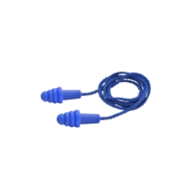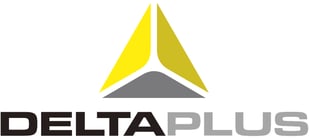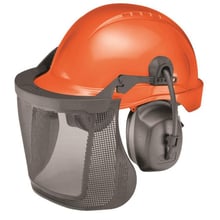
Logger Safety Products and Tips
Logging has consistently been one of the most hazardous industries in the U.S. 95 workers were fatally injured in the industry in 2006, resulting in a fatality rate of 85.6 deaths per 100,000 workers. The fatality rate for all occupations in the U.S. in 2006 was 4 deaths per 100,000 workers. 17% of logging employee fatalities are machine-related accidents and the total medical costs in 2007 approached $300 million.
Logging Protection
- Use to protect your head, eyes, ears, face, hands, legs and feet
- Wear even in hot weather
- Inspect before each use
- Does NOT eliminate the potential hazards
Employers must provide PPE to employees at no cost for logging protection. Training and enforcement of PPE is the responsibility of the employer as well.
Head Protection
Many loggers are killed by being struck in the head by flying/falling objects. Even the smallest piece of wood can be deadly when hitting the body.
- Wear hard hats that are designed to absorb energy
- Wear hard hats that are a high visibility color
- Head protection must be ANSI approved; look out for the ANSI Z89.1 stamp!
DeltaPlus Elvex® ProGuard™ Integrated Logger System conveniently combines head, face, and hearing protection to provide all your safety needs. This system comes equipped with a vented Tectra™ cap with 8 ventilated holes at the crown, 6-point ratchet adjustable suspension with nylon webbing for a secure fit, black visor bracket, black steel mesh face shield and QuickSnap™ medium profile ear muffs in black with 27 NRR (Noise Reduction Rating). Earmuffs offer 2 rest positions: Flip out muffs for short-term breaks or flip-up muffs on top of the safety cap. Safety cap meets Class C Requirements and ANSI 289.1-2009. Note: ANSI Z87 requires that safety glasses must be worn even when wearing a face shield or screen. This Integrated Logger System is recommended for industries such as agriculture, design & construction, forestry, heavy infrastructure, industrial maintenance, utilities, and transportation.
Hearing Protection
- Time Weighted Average (TWA) represents the average noise level that you are exposed to in an 8-hour period including all levels of noise experienced
- Workplace noise exposure limits are expressed in units of dBA. Decibels are measured using an A-weighted scale for noise level, which adjusts the noise measurements using a built-in A-weighted filter that largely ignores low-frequency sound energy just like human ears do
- OSHA requires that all employers administer a hearing conversation program whenever worker noise exposures equal to or exceed 8-hour TWA of 85 dBA
- Long or repeated noises at or above 85 dBA can cause hearing loss

- Some hearing loss can occur naturally as you age
- Ears are not designed to deal with harmful loud noises, such as that produced by a chainsaw (110 dBAs)
- Hearing loss can be gradual, not always obvious from the start
- Noise may increase your blood pressure
Did you know?
- Loader is 85 TWA (dBA)
- Skidder is 88 TWA (dBA)
- Dozer is 97 TWA (dBA)
- Timber Cutter is 104 TWA (dBA)
Remember that the timber cutter’s 104 dBA level considers that the saw only runs about half of the time. The dozer and timber cutter operators’ noise exposures exceed 90 TWA (dBA) – they need hearing protection!
Eye and Face Protection
- Eye and face protection must be worn for all logging operations
- Logger-type mesh screens are considered adequate eye and face protection for chain saw users
- Equipment must comply with ANSI standards and regulations; look out for the ANSI stamp on products
- Do NOT wear regular glasses or sunglasses while working or around the worksite
Leg Protection

Each worker who operates a chain saw must wear leg protection, commonly in the form of saw chaps.
- Chaps are made of cut-resistant material such as Kevlar or ballistic nylon
- Chaps must extend from the upper thigh down to the boot top
- Chaps must be Underwriters Laboratories (UL) approved – check for the tag located on the outside of the caps
- The average cost of chaps is $75… the average medical cost for a leg injury from a chain saw is $7,500
Foot and Hand Protection

Employers must ensure that workers wear foot and hand protection.
- Boots should be heavy-duty, water-repellent, cover and support the ankle
- Cut-resistant boots are required by OSHA for chain saw operators (also must be UL approved)
- Gloves are required for all workers who handle wire rope
- Gloves for wire rope handling should be cotton or equivalent
The Sault Pigmented Split Leather Waterproof Boots are formed with Polyamide lining and a removable insole. Features dual-density polyurethane injected outsole with bump cap.

Check out more DeltaPlus products here
